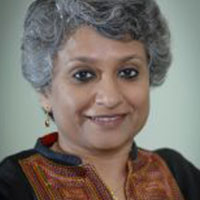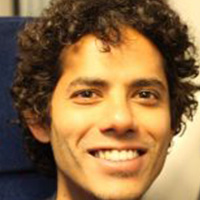Since reservations were provided in government bodies for lower castes in the early 90s, ‘Other Backward Classes’ have been an important force in Indian politics at all levels. Has there been a corresponding change in traditional economic hierarchies? This column finds significant gaps in the standard of living between OBCs and higher castes. However, there is evidence of catch-up among younger people.
The rise of the Other Backward Classes (OBCs)1 in the political arena since the mid-1980s has been heralded as India’s “silent revolution” (Jafferlot 2003). Indeed, there is no doubt, especially since the 73rd and 74th constitutional amendments2 in the early 1990s, that the so-called lower castes have become an important force in Indian politics at all levels - local, state and national. However, has this change in the political arena been accompanied by a corresponding reshuffling of the traditional economic hierarchies, such that the vertical ranking of castes is unrepresentative of contemporary realities?
There is a large and growing body of work documenting the changes in the standard of living of the Scheduled Castes and Tribes (SCs and STs), as well as the economic discrimination faced by these groups (see Deshpande 2011, for a review of the recent research). However, the discussion about the material conditions or the economic dominance of the group of castes and communities classified as the “OBCs” in India is prompted more by beliefs, or localised case studies, rather than by a detailed analysis of nationally representative data. Part of the reason for this gap is the lack of hard data: until the 2011 census, OBCs were not counted as a separate category, while affirmative action (reservation or quotas) was targeted towards OBCs at the national level since 1991, and since much earlier at the state level3.
We use data from two five-year rounds of the employment-unemployment surveys (EUS) of the National Sample Survey (NSS) for 1999-2000 and 2009-2010, to examine multiple dimensions of material standard of living indicators, and the changes therein for the OBCs in India, in comparison to SC-STs4 and the social group “Others” (Deshpande and Ramachandran 2013).
The broad picture
We find clear disparities in virtually all indicators of material well-being, with “Others” at the top, SC and STs at the bottom and OBCs in between, confirming existing evidence and narrative. The broad picture reveals that the current average gaps on key indicators between the “Others” and the other two social groups are large. The average monthly per capita consumption expenditure (MPCE), an indicator of standard of living in developing countries, of the OBCs and SC-ST is found to be only 65% and 51% of the “Others”, respectively. Looking at years of education, the gap between “Others” and OBCs remains as large as 2.21, whereas the gap between SC-ST and OBCs is 1.47. The average wages of the OBCs and SC-ST are only 55% and 42% respectively of the average wage of “Others”, and the share of labour force employed in white-collar prestigious jobs is just one-fourth and one-half respectively of the “Others”.
Convergence in basic education for younger groups
We find evidence of convergence between OBCs and “Others” for the younger cohorts on the indicators of literacy and primary education attainment but there is continued divergence when higher educational categories are considered The fact that on the higher categories of education, which are critical to achieve social mobility, traditional hierarchies have not only persisted but widened over the 50 year period, is noteworthy. As the lower educational levels are witnessing a convergence between broad caste groups, but higher levels are not, targeted policies towards higher education might be needed to close those gaps5.
We also match educational attainment of fathers with their sons in order to examine whether the pattern of increasing educational attainment, which we observed above, is driven by sons of educated fathers obtaining even higher education (intergenerational persistence), or is it due to the upward movement of sons whose fathers had low education (intergenerational mobility). We find that the conversion of parents’ endowment of education into human capital of children is highest for people from the socially privileged, non-backward groups. We also see that SC-ST sons have a higher probability to be graduates and above, compared to the OBCs, contingent upon their fathers being graduate and above. This suggests that reservations for SC-STs in higher education, which have been in operation much longer than for OBCs, are having a positive effect in that they are producing a greater share of graduates among SC-STs in families where the fathers are also highly educated. It is likely that the SC-ST sons are second-generation beneficiaries of reservations.
Access to occupation groups
Sharp inter-caste disparities are seen in access to broad occupation groups. SC-STs record the highest proportion in agricultural jobs consistently for all cohorts, followed by OBCs and Others; whereas for white-collar jobs, “Others” record the highest proportions for all cohorts, followed by OBCs and then SC-STs. For blue-collar jobs, the picture is mixed, in that OBCs record the highest proportions, followed by “Others” and then SC-STs.
Analysing the nature of structural change, we see that the proportion employed in agricultural jobs reduces from 78.5% to 51.28%, 74.55% to 46% and 71.85% to 35.46% for the SC-ST, OBCs and “Others”, respectively from the oldest to the youngest cohorts. This decrease in agricultural employment is accompanied by an increase in blue-collar jobs, though many of them still are not regular salaried jobs.
We now analyse how the distance among the caste groups is changing across occupations.
White-collar jobs
Despite large gaps between the social groups, younger cohorts among OBCs seem to be closing the gap vis-à-vis “Others” in terms of access to prestigious white-collar jobs6. The younger cohorts of SC-STs, however, continue to lag behind. Given the presence of quotas in public sector and government jobs, the continued lagging behind of SC-STs possibly indicates continued gaps in the private sector.
Public sector jobs
We can explore the issue of the effect of reservation of jobs more directly by looking at access to public sector jobs, one of the sites for affirmative action, which in India takes the form of caste-based quotas (22.5% for SC-ST; additional 27% quotas for OBCs were introduced at the national level for central government jobs in 1990; various state governments introduced state-specific OBC quotas at different points in time after 1950). We find that SC-ST percentages with access to public sector jobs are consistently higher than those for OBCs, which is different from the access to white-collar jobs. We believe that the difference in the relative picture between SC-STs and OBCs reflects the longer operation of SC-ST quotas. “Others” have the highest percentage of public sector jobs across cohorts. Our analysis reveals that OBCs are catching up, both with SC-STs and “Others”. This is most strikingly true for those, born between the years 1956-1965, individuals who would have been between 35 and 25 years old in 1990 and hence eligible to take advantage of the new quotas. This catch-up continues onwards to younger cohorts. We see a similar convergence between SC-ST and “Others”, which is in contrast to the picture of divergence between SC-ST and “Others” in access to white-collar jobs.
Dissimilarity in job types
In terms of occupational status, we find that OBCs are closer to the “Others” (less dissimilar to them) as compared to the SC-STs (who are more dissimilar compared to “Others”). We try to examine sources of (dis)similarity and find that proportion of OBCs involved in regular wage-salaried jobs (an index of integration into the formal economy and job security) are converging with those of “Others”. This said, it should be noted that only around 15% of the OBC cohort has regular wage-salaried jobs. Looking at the other end of the spectrum, we find that the rate of casualisation for SC-STs (50% of the youngest cohort still holds causal labour jobs) is significantly higher than that for OBCs and for “Others”.7
Wages and labour market discrimination
The average wages for the three caste groups show the expected ranking. In 2009-2010, the average wages were Rs. 660, 848 and 1,286 respectively for SC-STs, OBCs and “Others”, respectively. It is also found that younger OBCs face lower discrimination in the labour market, compared to the earlier cohorts8. We should note that this is not a general labour market feature, as we don’t observe this for SC-ST versus “Others”, who face much higher labour market discrimination, compared to OBCs.
Conclusion
Overall, despite significant gaps in all indicators (MPCE, wages, educational attainment, occupational attainment and so forth), we find substantial evidence of catch-up between OBCs and Others for the younger cohorts (especially in literacy, primary education, access to white-collar jobs, wages). A preliminary regional analysis linking these indicators with proportion of OBC Members of Legislative Assemblies (MLAs) in state assemblies suggests that economic outcomes of OBCs are not closely related to the strength of their political representations. We hope to shed more light on the underlying mechanisms for the observed trends, by comparing evolution on a state level basis in future work.
Notes:
- Jatis (castes) and tribes in contemporary India are divided, for administrative purposes, into four categories. The two categories, identified for the purpose of constitutionally guaranteed quotas, are: (i) the most marginalised castes and the ex-untouchables, grouped under the umbrella term “Scheduled Castes”, and (ii) tribes that are similarly marginalised are identified as “Scheduled Tribes”. Castes that, in principle, are low in socio-economic hierarchy and suffer from a range of social disabilities and exclusion are clubbed under “Other Backward Classes”. The residual or the socially non-disadvantaged group is simply called “Others”.
- The 73rd and 74th amendments provide for quotas (or reservation) for Scheduled Castes and Tribes (SCs and STs) in Panchayati Raj institutions and urban local government bodies.
- (i) This would be the only instance of an affirmative action policy anywhere in the world where the targeted beneficiaries of a national programme, who ironically form the largest social group with 41.72% of the population (National Sample Survey 2009-2010), are not counted as a separate category in the country’s census. (ii) The few existing estimates on the socio-economic position of the OBCs place them somewhere in-between SC-STs and “Others” (the residual category). However, first, very little is known about their relative distance from the two categories, and second, we don’t know enough about the link between their political ascendancy and changes in their economic conditions over time.
- We have pooled the two groups, because despite considerable differences in their social situation, their economic outcomes are very similar.
- This said, it should be noted that we are only able to compare the evolution in terms of quantity of education and cannot comment on the quality aspect or variation in quality among groups.
- The proportion of OBCS with white-collar jobs increases from 3.8% to 14.9% from the oldest to the youngest cohort.
- 30% and 19% of the youngest cohort of OBCs and “Others” hold casual jobs, though less than 50% of the SC-ST it remains a substantial proportion.
- We decompose the average male wage gap between OBCs and Others in order to estimate labour market discrimination. The unexplained proportion (not explained by age, education, occupation etc.) indicates discrimination.
Further Reading
- Deshpande, Ashwini and Rajesh Ramachandran (2013), “How Backward are the Other Backward Classes? Changing Contours of Caste Disadvantage in India”, Centre for Development Economics, Working Paper No. 233.
- Deshpande, Ashwini (2011), The Grammar of Caste: Economic Discrimination in Contemporary India, Oxford University Press, New Delhi.
- Jafferlot, Christophe (2003), India’s Silent Revolution: The Rise of Low Castes in North Indian Politics, Permanent Black, New Delhi.




 04 December, 2013
04 December, 2013 





Comments will be held for moderation. Your contact information will not be made public.